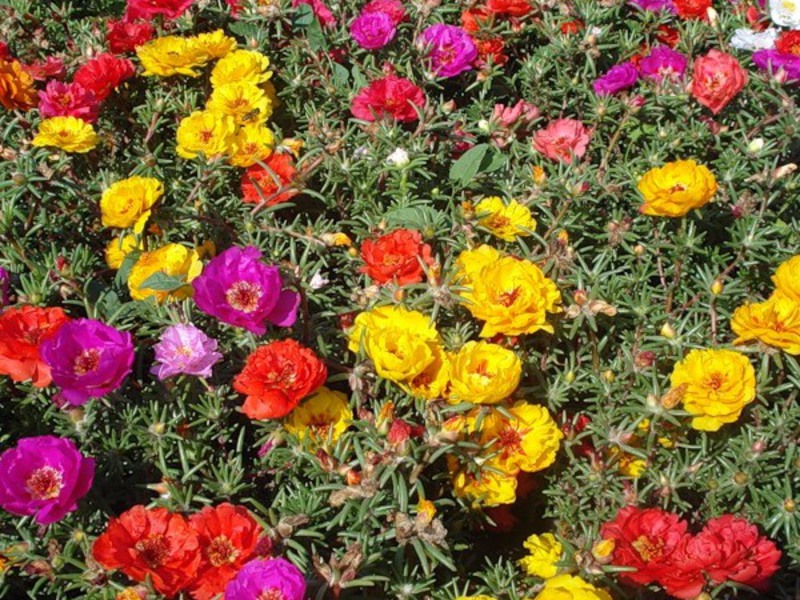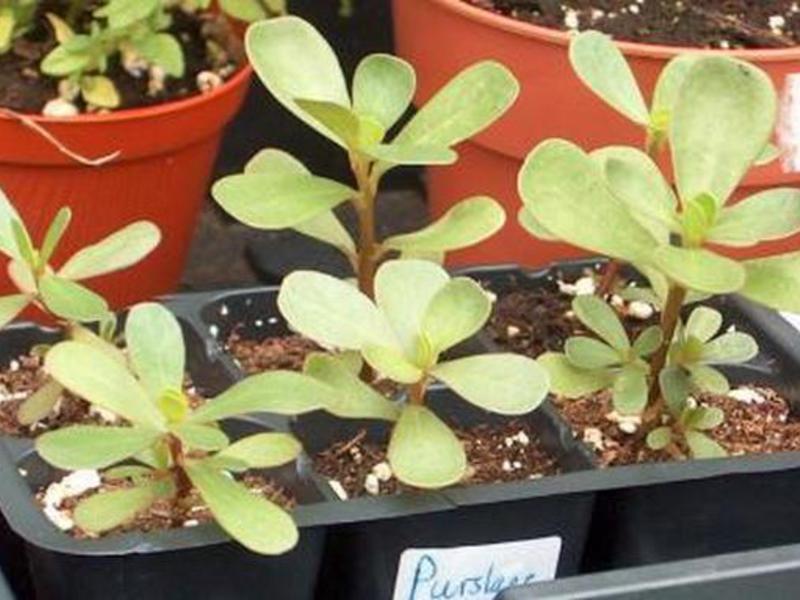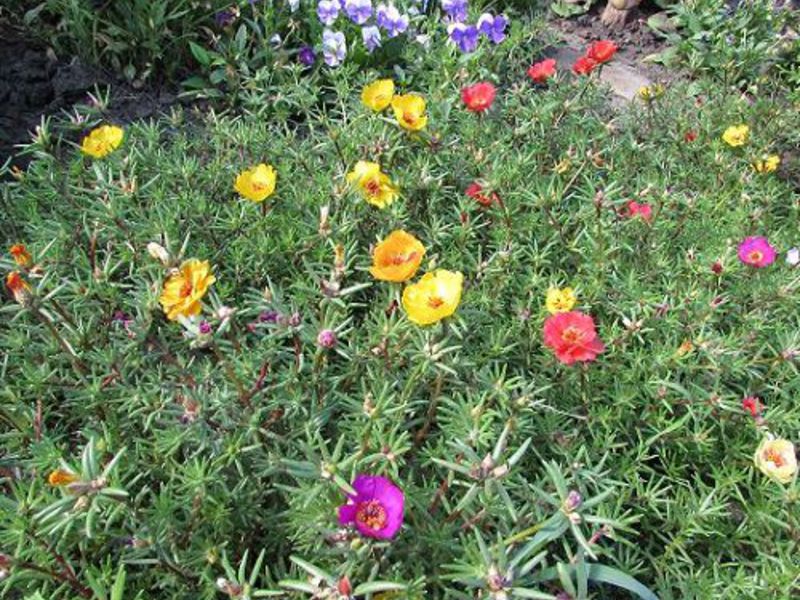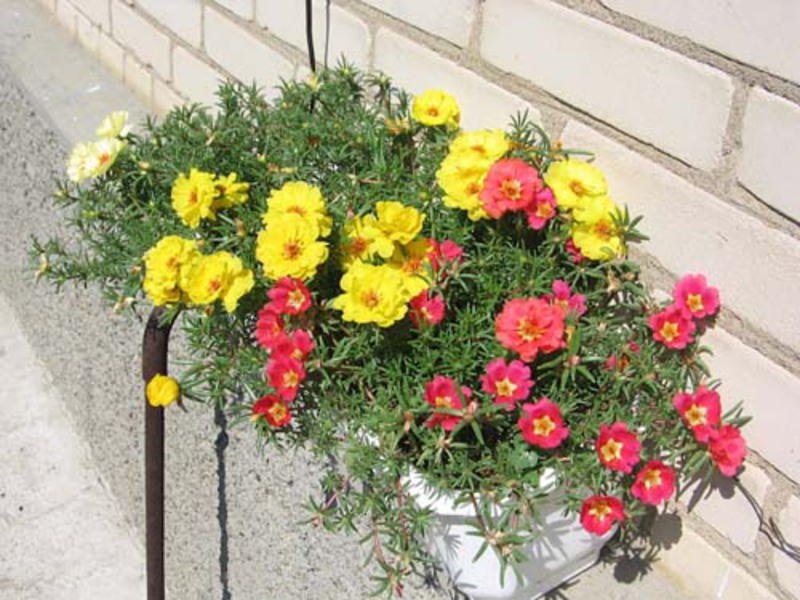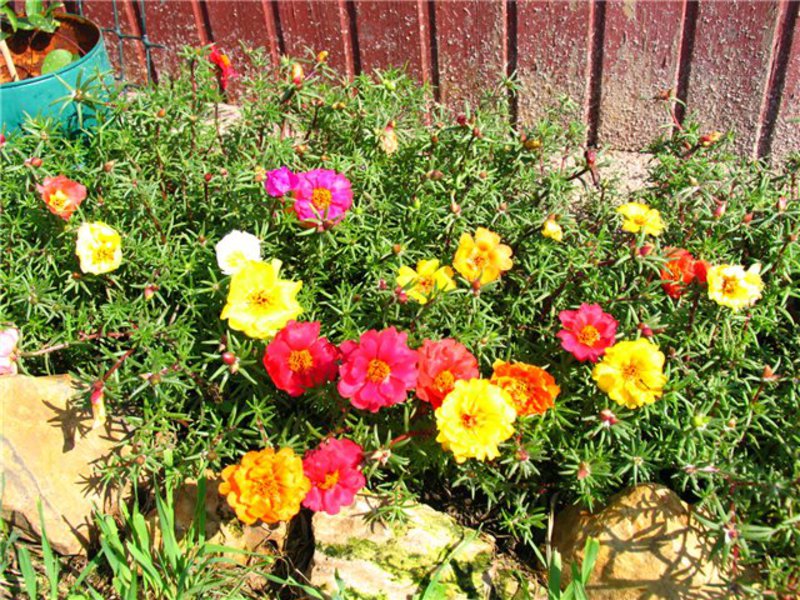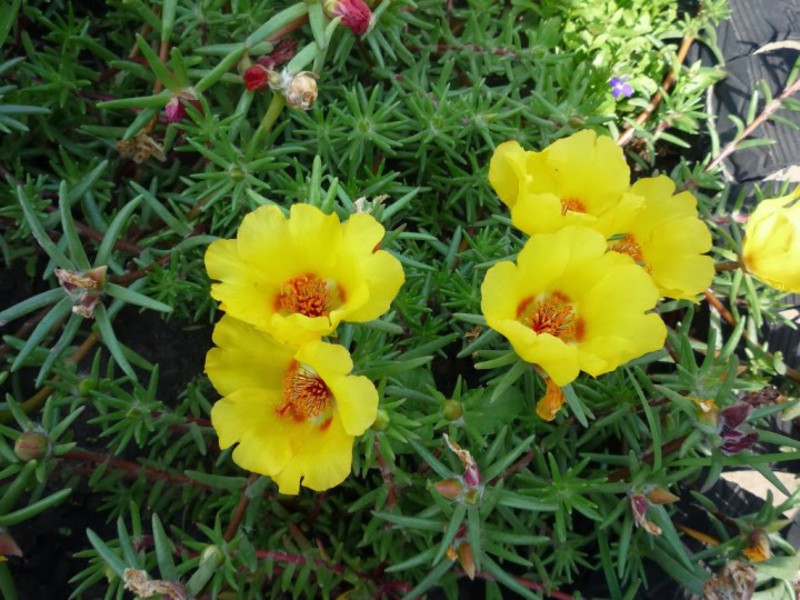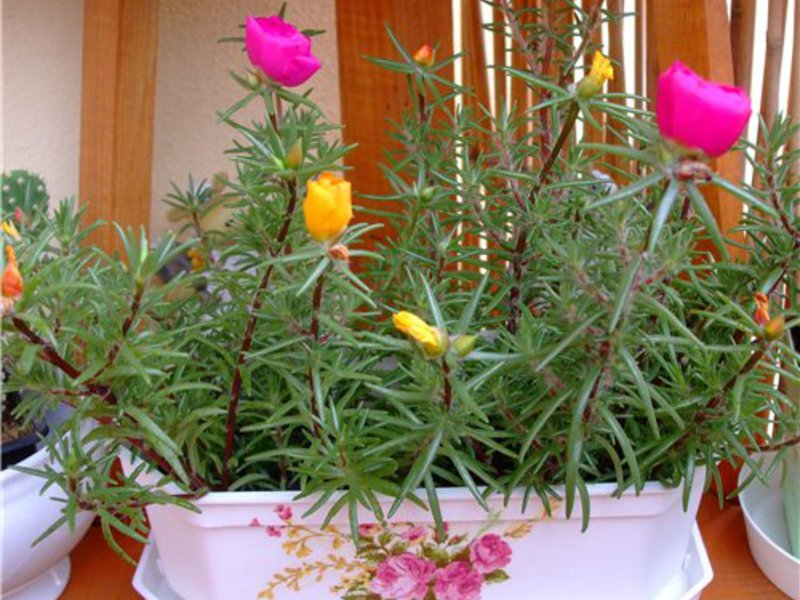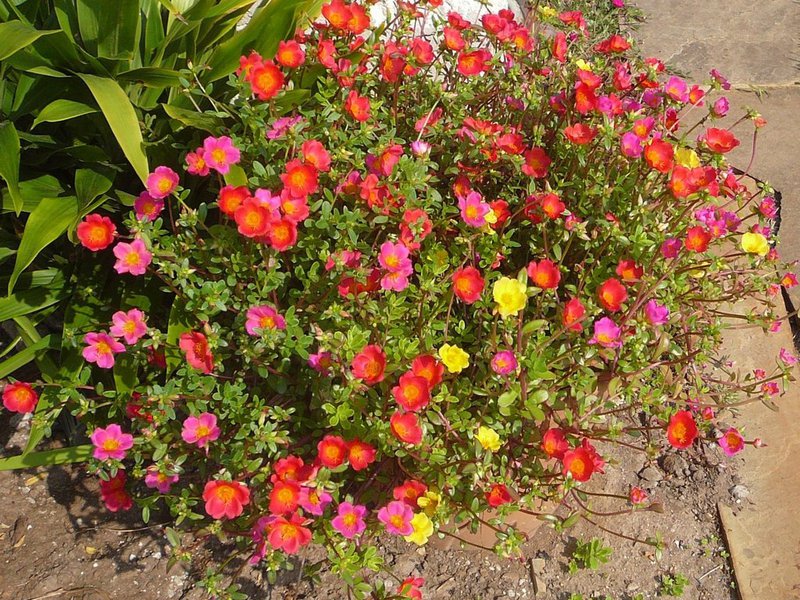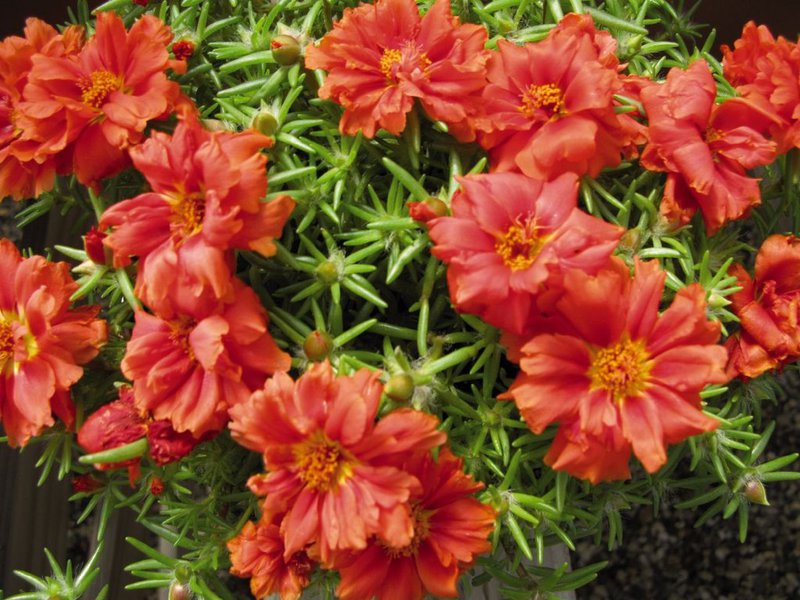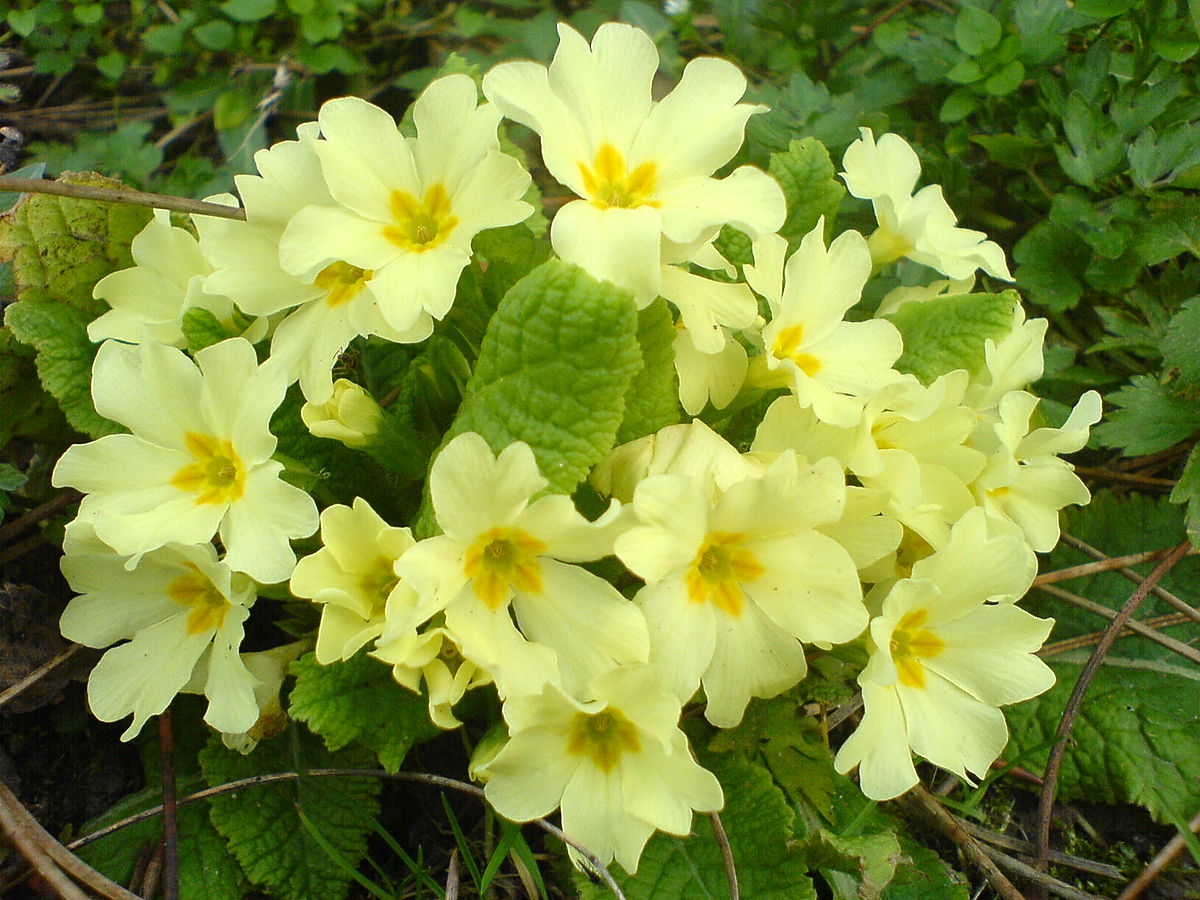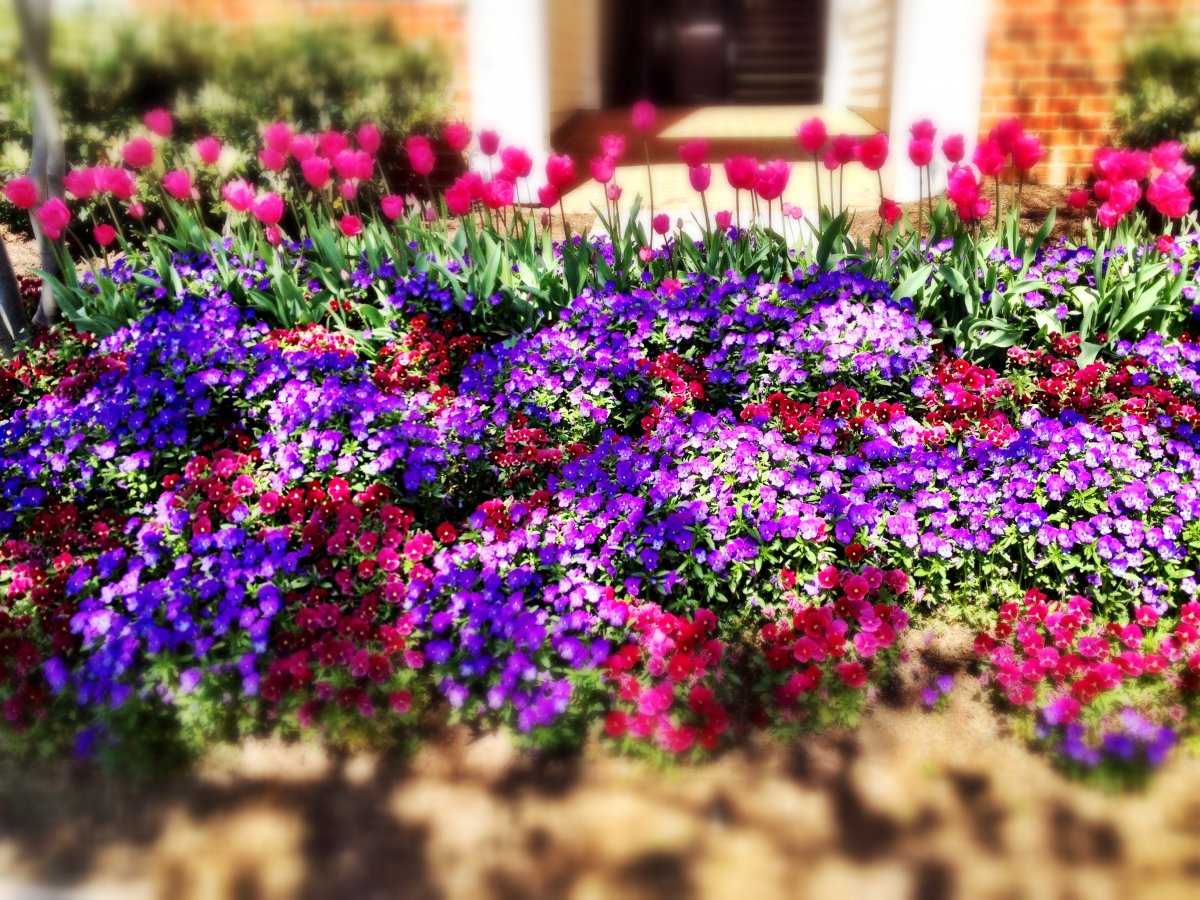Purslane attracts attention with its unusual name. If you try to translate it from Latin, you can learn a lot about this plant: "portula" means "collar" which quite definitely indicates the peculiarities of the opening of the seed pod. However, domestic gardeners are not used to this name, so they gave it their own - "rugs".
Content
Purslane features
Purslane is widely distributed in warm regions of central Europe, North and South America, where it is considered a field weed. Often it is specially grown in vegetable gardens and orchards... In the Middle Ages, this plant could often be found in European countries, primarily in England. In the time of Hippocrates, purslane was considered a medicinal plant that helped in the treatment of wounds, with poisonous snake bites and insomnia. In the Middle Ages, purslane was one of the revered plants among the Arabs.
The genus of purslane has a numerous composition, which includes about 200 species of annual and perennial herbaceous plants.
Large-flowered purslane (Portulaca grandiflora), which is native to South America, is most often used as an ornamental plant. A feature of this perennial is the presence of a creeping long stem, which reaches a height of 20 cm... It was most widely used in the design of rocky gardens and curbs.
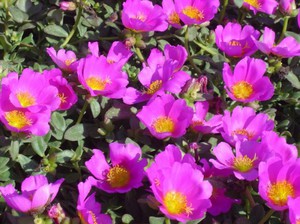 The leaves of the plant have a fleshy structure, are distinguished by their small size and cylindrical shape, their characteristic color is green or slightly reddish.
The leaves of the plant have a fleshy structure, are distinguished by their small size and cylindrical shape, their characteristic color is green or slightly reddish.- In the process of growth, the flowers acquire a cupped shape, formed by accrete petals.
- Sometimes the flowers are double, medium-sized, which can vary in color: from white and cream to pink and red.
The most beautiful varieties are considered to be with double flowers. A striking example of this is grade "Double Mix"... Purslane variety "Belotsvetkovy" clearly indicates that its flowers are white. Against this background, the Slendens variety stands out, in which the flowers acquire a purple color.
Today, the purslane has gained fame as one of the famous representatives of container plants. To grow it, you can use a wide variety of containers:
- street vases;
- hanging baskets;
- window and balcony boxes.
Big variety this plant also demonstrates when used in garden decoration. It can be present in flower beds, flower beds, complement retaining stone walls, joints of concrete slabs in rockeries. Also, it can be grown on dry soils, where it can be an excellent alternative to an ordinary lawn, creating no less problems in maintenance.
The nuances of growing purslane in the open field
In order for this plant to give only positive emotions, it is necessary to take into account some points regarding its cultivation.
Location
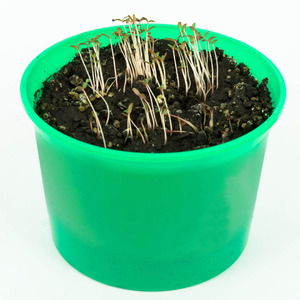 Best of all, purslane flowers feel in those areas that have maximum illumination. Otherwise, you can simply not wait for it to bloom.If purslane is considered for growing at home, then it is best to place containers with plants on the south side. However, it grows best in balcony and window boxes, which are provided with a constant supply of fresh air. But in both cases, caring for the plant will not be difficult.
Best of all, purslane flowers feel in those areas that have maximum illumination. Otherwise, you can simply not wait for it to bloom.If purslane is considered for growing at home, then it is best to place containers with plants on the south side. However, it grows best in balcony and window boxes, which are provided with a constant supply of fresh air. But in both cases, caring for the plant will not be difficult.
Temperature
Large-flowered purslane is one of those plants that are accustomed to growing in hot climates. However, small cold snaps are not able to harm this plant, since it is most often grown as an annual.
Watering
Caring for purslane involves regular watering. Therefore, after sowing, it is necessary to constantly monitor that the soil is moistened. However, excess moisture can adversely affect its development.
Diseases and pests
Plants belonging to the genus Purslane are resistant to diseases and pests. The fungus Albugo portulaceae can pose a danger to purslane, traces of which are found only in very rare cases. This can be determined by the presence of spots on the leaves and deformation of the shoots. Fighting fungi consists in removing damaged parts and spraying the plant with any copper-containing fungicide preparation.
Acquisition
It is recommended to search for planting material in late winter or early spring. In this case, it is imperative to make sure that the sachet is intact and pay attention to the expiration date. If you need ready-made seedlings in cups, then you can contact a florist nursery or horticultural center. Particular attention should be paid to the fact that young seedlings have no signs of decay.
Purslane care
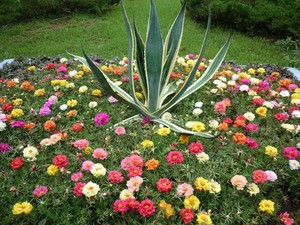 For normal growth and development of purslane flowers, it is necessary to provide a long daylight hours. Only in this case it will be possible to count on its beautiful flowering. If you are engaged in the cultivation of purslane at home, then it is best to install containers with plants on windowsills facing the south. It is more preferable to use balcony and window boxes for it, since they can be provided with a lot of direct sunlight.
For normal growth and development of purslane flowers, it is necessary to provide a long daylight hours. Only in this case it will be possible to count on its beautiful flowering. If you are engaged in the cultivation of purslane at home, then it is best to install containers with plants on windowsills facing the south. It is more preferable to use balcony and window boxes for it, since they can be provided with a lot of direct sunlight.
Sowing features
Favorable conditions for good growth of purslane flowers are a temperature within 20-26 degrees Celsius... This plant is undemanding to moisture, but if container pots are used for growing, then watering must be carried out regularly in small quantities. When growing purslane, the owner does not have to engage in such a laborious operation as feeding. Therefore, if you plant a plant on not very fertile land, then the purslane will feel good here too.
- The most favorable time for sowing purslane flowers is March. However, if we turn to the floriculture literature, then there are recommendations on the possibility of sowing in earlier (third decade of February) and later (first decade of April).
- They begin to sow purslane when the daytime temperature is kept at around 20-25 degrees, and for this purpose they use mini-greenhouses. In bright sun, the temperature in it can rise to 50 degrees Celsius. This only benefits the purslane, as its growth rate increases. If, after planting, the plants are not provided with the necessary amount of light, this will lead to stretching of the seedlings.
Greenhouse planting
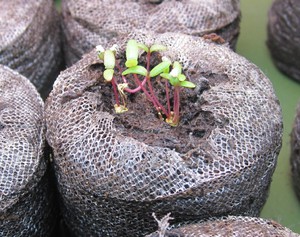 You can also make a greenhouse from scrap materials. For example, it could be plexiglass aquarium... In this case, it is necessary to stretch a plastic wrap over it or put a plexiglass cover. Next, the aquarium is installed on the most illuminated window. In low light, you can avoid pulling seedlings by using additional lighting. For this, you can use a fluorescent lamp or a table lamp (40-60W).
You can also make a greenhouse from scrap materials. For example, it could be plexiglass aquarium... In this case, it is necessary to stretch a plastic wrap over it or put a plexiglass cover. Next, the aquarium is installed on the most illuminated window. In low light, you can avoid pulling seedlings by using additional lighting. For this, you can use a fluorescent lamp or a table lamp (40-60W).
Plants especially need additional lighting in the morning and evening hours. If the weather is cloudy outside, then they need to be illuminated throughout the day.
If you plan to sow small amount of seeds, it is recommended to use compact plastic pots for this purpose. Their bottom is filled with fine gravel and coarse sand, which will act as drainage. Next, soil is poured there. The composition of the mixture used must be free of peat and organic fertilizers. In the presence of the first component, you can not wait for the seedlings to germinate, and in the presence of the second, the seedlings will grow weak and will not be able to resist fungal diseases.
When preparing an earthen mixture, it is allowed to add no more than 20% of sand with a diameter of 0.1 mm to it. You can fertilize heavy clay soil with charcoal. The containers with the soil mixture must be placed in a pallet pre-filled with soft, settled water. It is not recommended to use hard water for irrigation, as this leads to a decrease in the percentage of similarity.
After waiting for the soil to moisten, you can sow. To do this, you need to take a match and place the seeds on the surface of the soil with a pointed end. Further, the grain needs to be slightly deepen into the soil by 0.5-1 mm... The distance between the seeds must be at least 1 cm. After sowing, the seed containers must be immediately placed in the greenhouse. If you do not plan to keep them on the window and will not use the backlight, then you need to watch when most of the seeds are free of the shell. At this moment, the bowls with the plantings are removed from the greenhouse and placed on the window so that they are as close to the glass as possible.
If you are going to supplement them with a table lamp, then it is recommended to do this in the greenhouse, after opening the lid. When illuminating seedlings with a 40 W lamp, it must be kept at a distance of 10-15 cm from the shoots. When using a 60 W lamp the distance is increased to 15-20 cm... If a significant drop in temperature is expected at night, then at this time the crops can be harvested in an open greenhouse. In the morning, after preliminary lighting, they are returned to the window. In the process of leaving, pay attention to the fact that the soil is constantly moistened.
If you are growing purslane in an apartment, and your balcony is located on the sunny side, then you can carry your crops there.
Conclusion
Purslane is one of the beautiful plants that can beautify any area. It is within the power of every summer resident to grow it, because for a purslane, planting and care in the open field suggests the same general recommendations as for many other ornamental crops. Particular attention must be paid to the choice of a landing site and creating optimal conditions for the growth and development of plants. Although purslane is undemanding to moisture, however, during especially dry periods, its need for water may increase. Therefore, care must be taken that there is no dry crust. Otherwise, it will affect its flowering.


